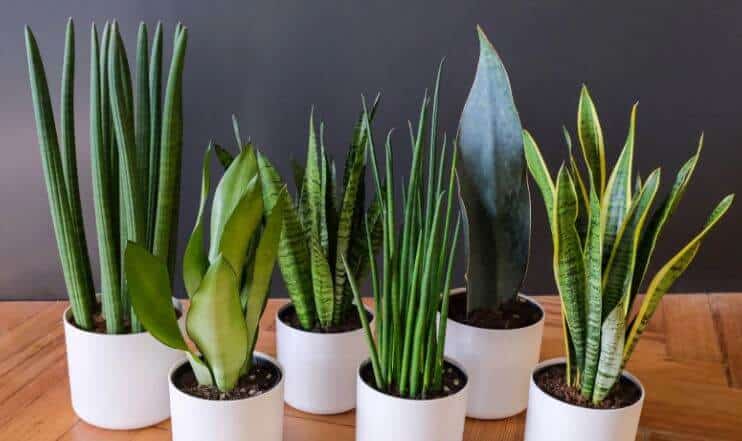Last Updated on May 23, 2023 by a Friendly Gardener
Snake plants are attractive succulents with a sculptural-like quality. Together with their aesthetic appeal, they are also undemanding plants making them exceptionally popular among indoor gardeners. Potentially tall with tough, spear-shaped leaves, many more common varieties are easily found in garden centers and nurseries and are generally varieties of the Sansevieria trifasciata now known as the Trifasciata Dracaena.
But the snake plant “Sansevieria” genus also contains some rare gems that merit attention. Recently, the botanical classification Sansevieria has been modified to Dracaena, but these plants continue to be recognized also with the traditional classification.
Snake plants are native to tropical areas in Madagascar, Southern Asia, and Western Africa and are drought tolerant. They owe, in fact, some of their popularity to their forgiving nature when left a bit neglected.
Rare Snake Plants
African Spear Plant
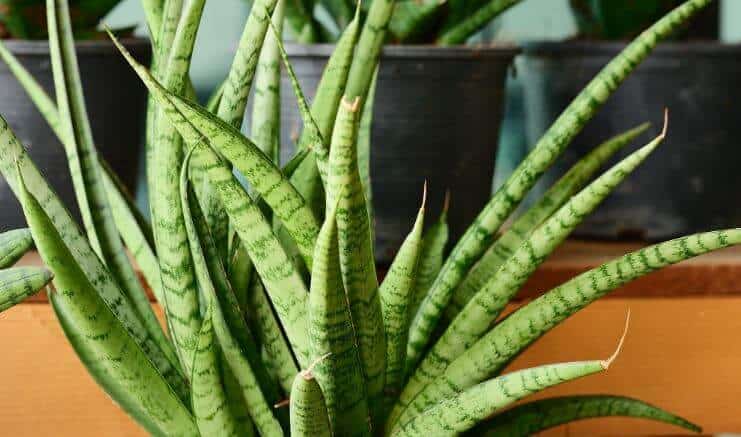
Thin, but long spherical leaves resembling tubes grow erectly in this uncommon snake plant cultivar. Originally labeled the Sansevieria cylindrica varslender, grassy green foliage sports blunt tips and is decorated horizontally with brighter green stripes that have various widths. Outdoors this plant can grow to six feet. This snake plant cultivar likes full direct sun exposure that will aid in maintaining vivid color and a robust growth habit. They will adapt to shade, but their growth habit will slow.
When they flower, these drought-tolerant plants produce delicate, petite white flowers on long stems that emerge from the plant’s center. Occasionally leaves will be braided for aesthetic reasons. Occasionally they can be found in shorter sizes and make nice accents for desks and windowsills.
Bantel’s Sensation Snake Plant
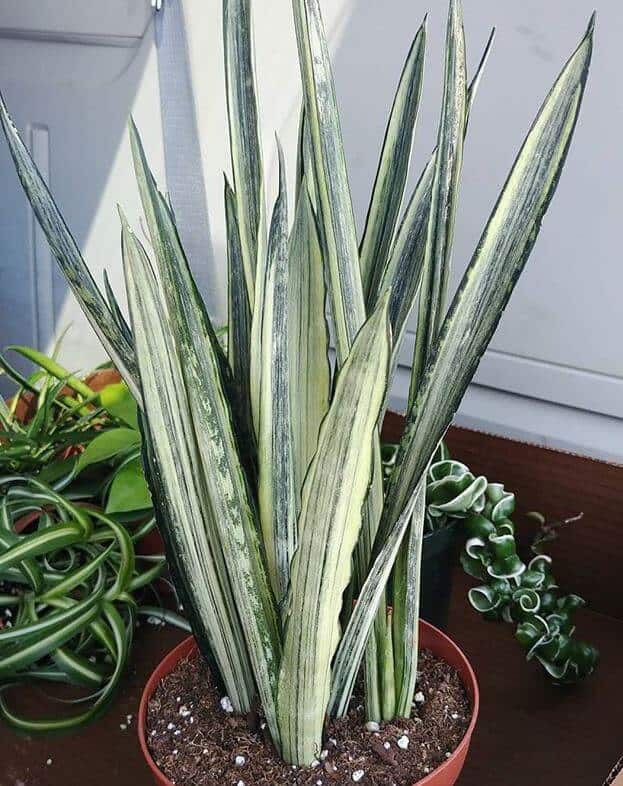
This delightful variety also referred to as the White Sansevieria was created by a breeder, Gustav Bantel, in a nursery using a tropical West African Snake plant Sansevieria trifasciata. This plant distinguishes itself thanks to a distinctive foliage pattern. Original thin leaves grow straight upward and are dark green featuring white vertical striping. This particular cultivar when cultivated outdoors will produce fragrant flowers when spring arrives but should not be located where it will receive harsh winter sun.
Black Dragon Snake Plant
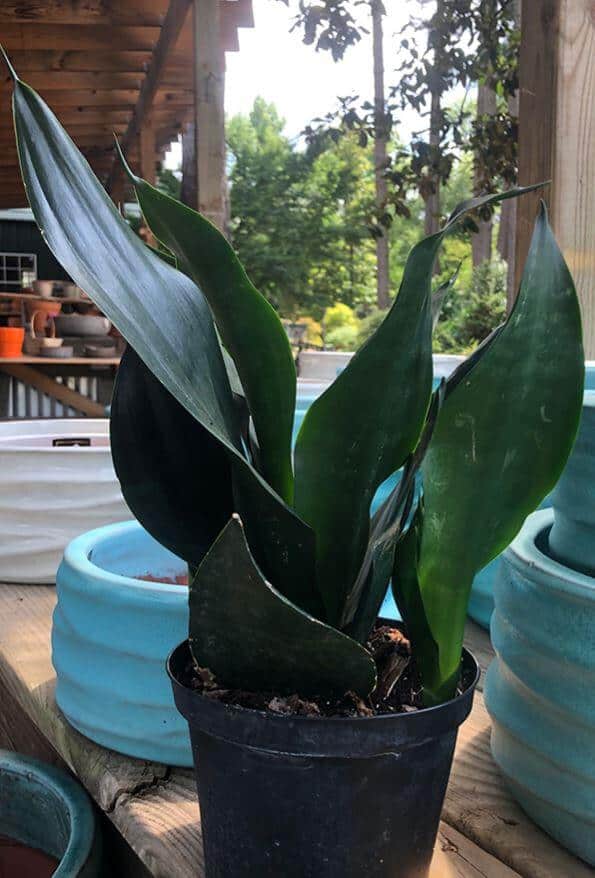
The Black Dragon is a variety of the rare Dragon Dwarf Sansevieria. Characterized by deep dark forest green foliage that is not variegated. The Sansevieria trifasciata “Black Gold” features large leaves that are lanced-shaped. This rarer variety will thrive in limited specific environments with moderate humidity. It is adaptable to various levels of sunshine but will reward its owner with black-gold green leaves when exposed to direct sunlight and blacker green foliage when cultivated in the shade.
Cleopatra Snake Plant

This compact cultivar known as the Sansevieria Cleopatra, boasts beautiful vibrant leaves that grow from a rosette. Foliage is a medium green with darker stripes that appear in an irregular pattern. Edges show bands that are reddish brown and whitish. Used for medicinal purposes, it can grow as high as four feet and enjoy a long lifespan with proper care.
Golden Bird’s Nest Snake Plant
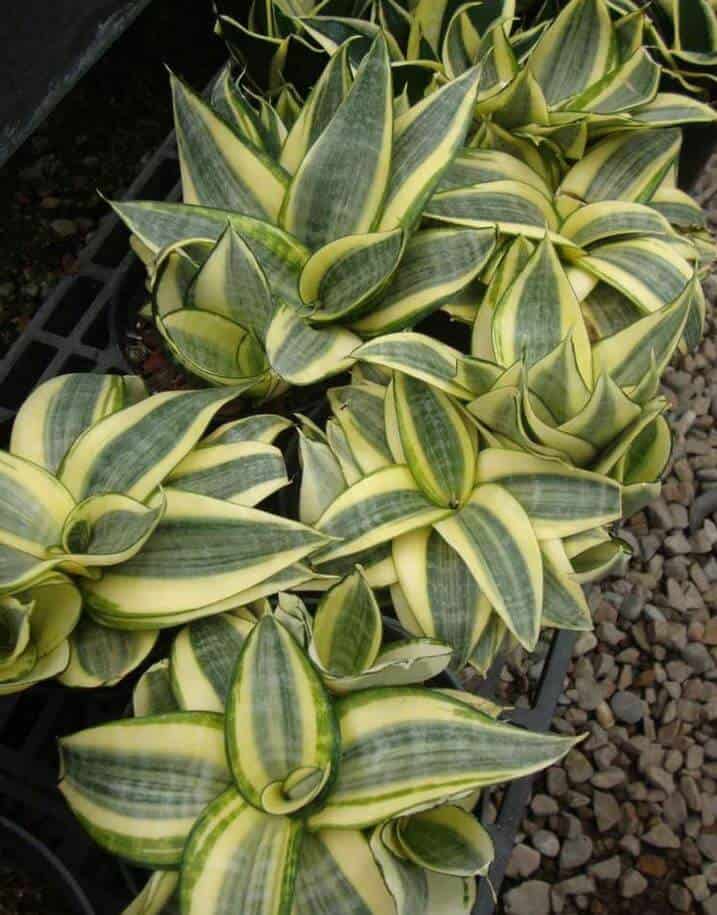
Oval-shaped leaves distinguish this compact Snake plant species. Botanically named the Sansevieria trifasciata “Golden Hahnii”, it was patented in 1941. The Hahnii was named for a botanist named Hahn and features foliage with bright and dark green rippling. Leaves are pointed and have a waxy texture. Both leaf edges and points may appear to be golden adding to their allure.
They prefer temperate climates and bright indirect light or partial shade. This plant also is called the “Bird’s Nest Snake plant”. With drought resistance and low maintenance, the Golden Hahnii will only grow between six and eight inches tall and six inches wide. This plant will do well in environments with fluorescent lighting making it ideal for indoor locations. In more temperate climates, it can be found as a ground covering.
Metallic Sansevieria Silver Siam

Often referred to as the “Tom Grumbley”, this perennial snake plant variety is characterized by linear pointed foliage that forms in a rosette. Foliage is leathery and stiff and one to two inches wide. Fine greyish-green bands adorn the leaves. With maturity, leaves will arch elegantly giving the plant a full appearance. This dracaena species will thrive in a sandy soil bed but can also be put in porting soil if good drainage is guaranteed.
Moonshine Snake Plant

A truly beautiful Snake plant, the Sansevieria Moonshine boasts large silver-green foliage that has sharp edges and leaf tip points. Dark green edges and paler green stripes add to its unique display. Capable of reaching four feet in height, they require considerable exposure to generous amounts of indirect sunlight. Like other varieties, the Dracaena trifasciata “Moonshine” is also drought tolerant. It will bloom in the spring and summer producing fragrant green or white flowers on a thin stem. This plant has a slow growth rate, so do not expect to see great changes even when in the best environmental conditions.
Samurai Snake Plant
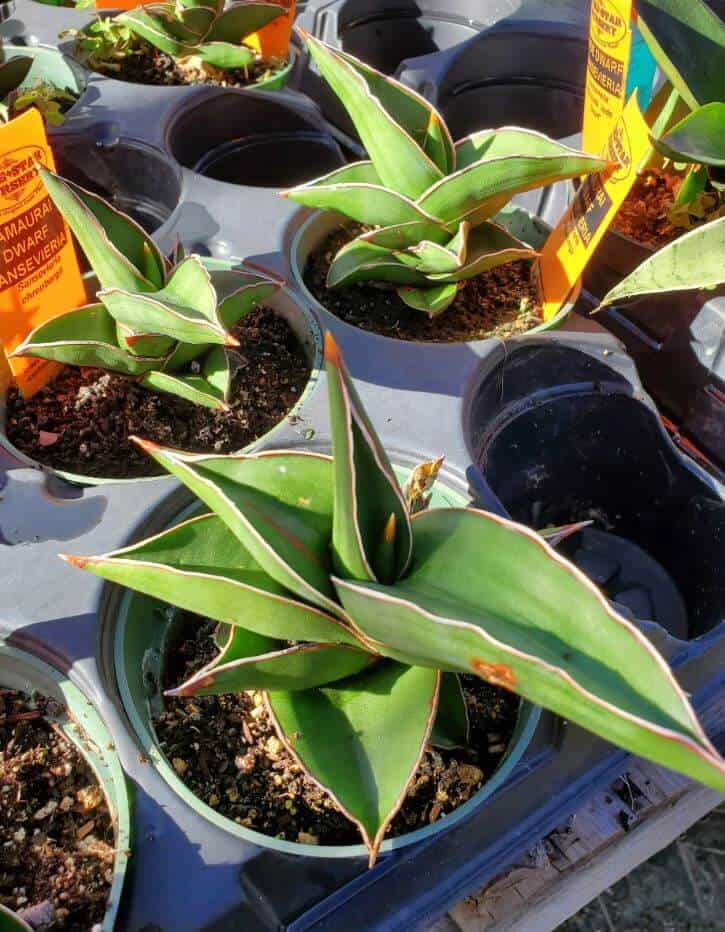
A rarest snake plant, and known originally as the Sansevieria ehrenbergii, it was named for the German naturalist Christian Ehrenberg. As it grows only between four and seven inches, you may hear it referred to as The Samurai Dwarf. Foliage is dark green with pointy tips that grow in alternating rows. Foliage may show reddish edges and tips increasing its uniqueness. This is a short snake plant that can be found in the tropical arid regions of Asia and Africa. It has recently been relabeled as the Dracaena hanningtonii. It is both attractive and resilient growing best in indirect but bright light. Soil should be formulated for cacti and succulents and temperatures are ideal when measuring between 60° and 70°F.
Star Snake Plant
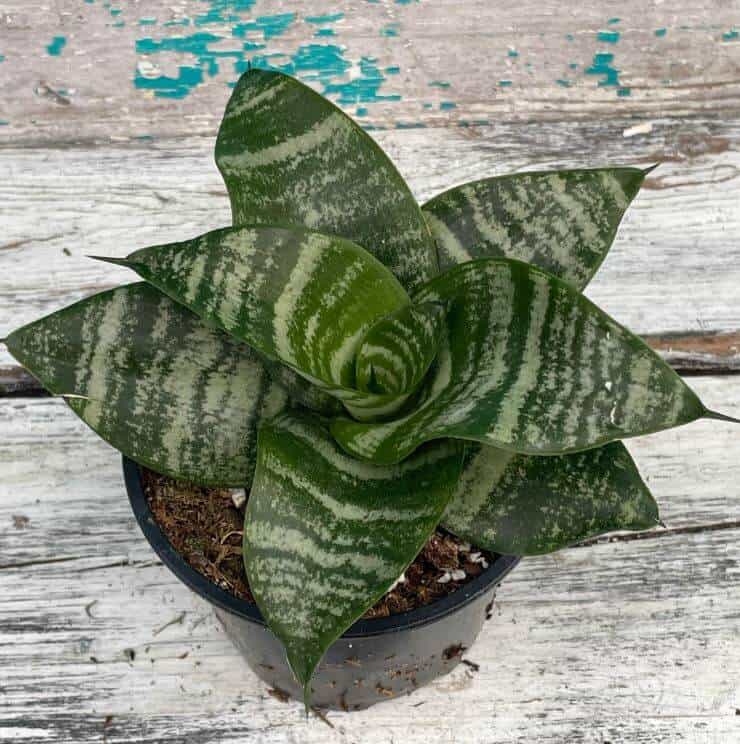
The Sansevieria kirkii “Star” plant has rare sword-shaped leaves that seem to be a star with multiple points. Foilage grows outward draping gracefully. Leaves have a dull appearance and feature irregularly patterned green and white stripes and patches. Edges are undulating and tinted a copper brown making it a striking décor accent. The Star snake plant enjoys moderate light, as too much light can turn edges yellow. When the Star snake plants flowers, blooms are scented and a whitish green in hue.
Whale Fin Snake Plant

Botanically referred to as the Sansevieria Masoniana, the Whale Fin Snake plant consists of a single giant leaf that resembles a whale fin. You may also find it as the “Mason’s Congo“ plant as it is named for its discoverer Maurice Mason. It looks like a leaf sticking out of a pot of soil even if it does indeed have roots. Leaves are mottled with lighter green patches. It is generally cultivated indoors with moderate indirect bright light, although it will adapt to lower lighting. For better color, brighter light is required.
In Conclusion
Rare snake plants and rare Sansevieria varieties abound and many more than those mentioned here as snake plants include upwards of seventy species. Each is unique and appealing making lovey decorative statements wherever located.

